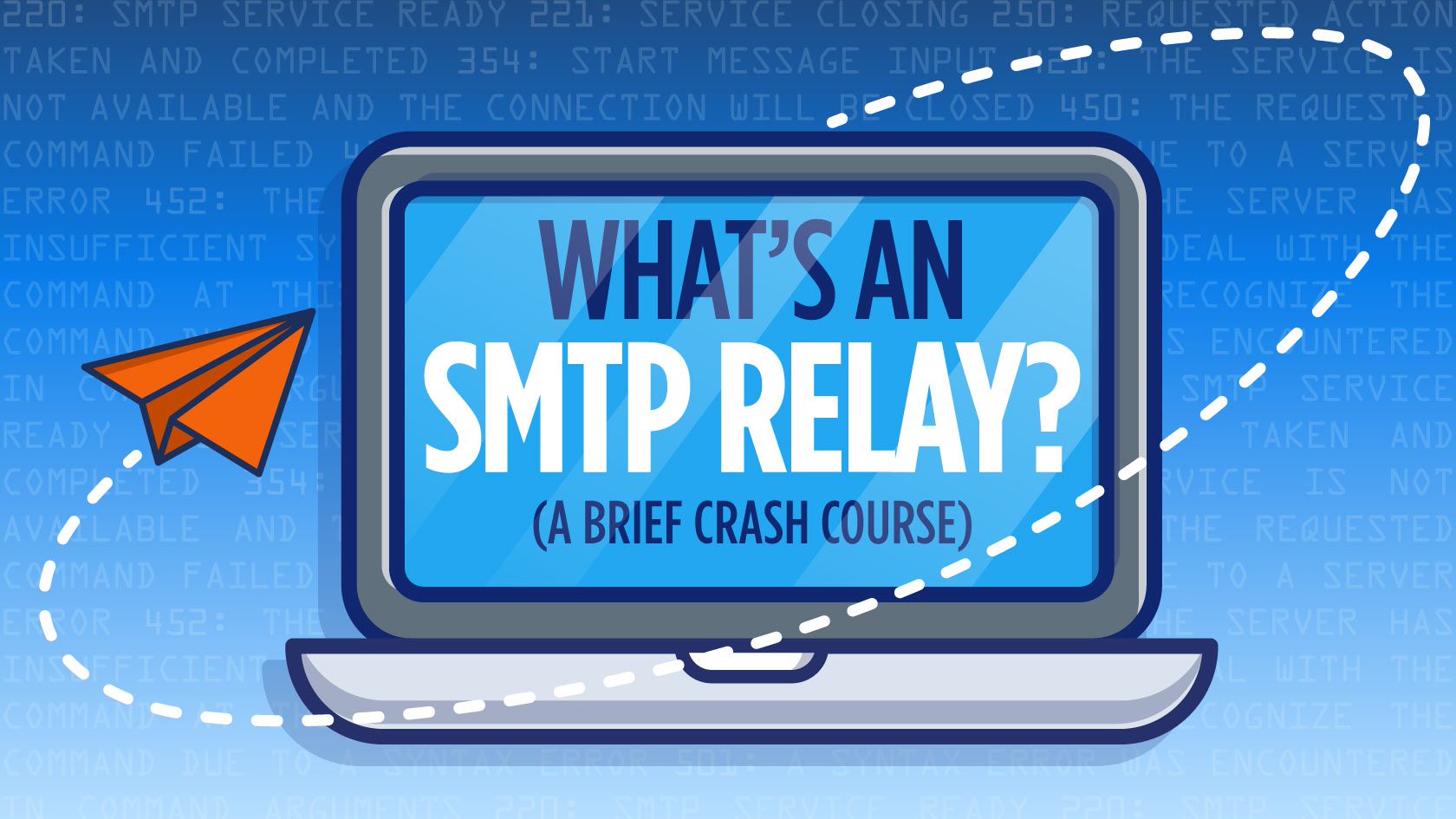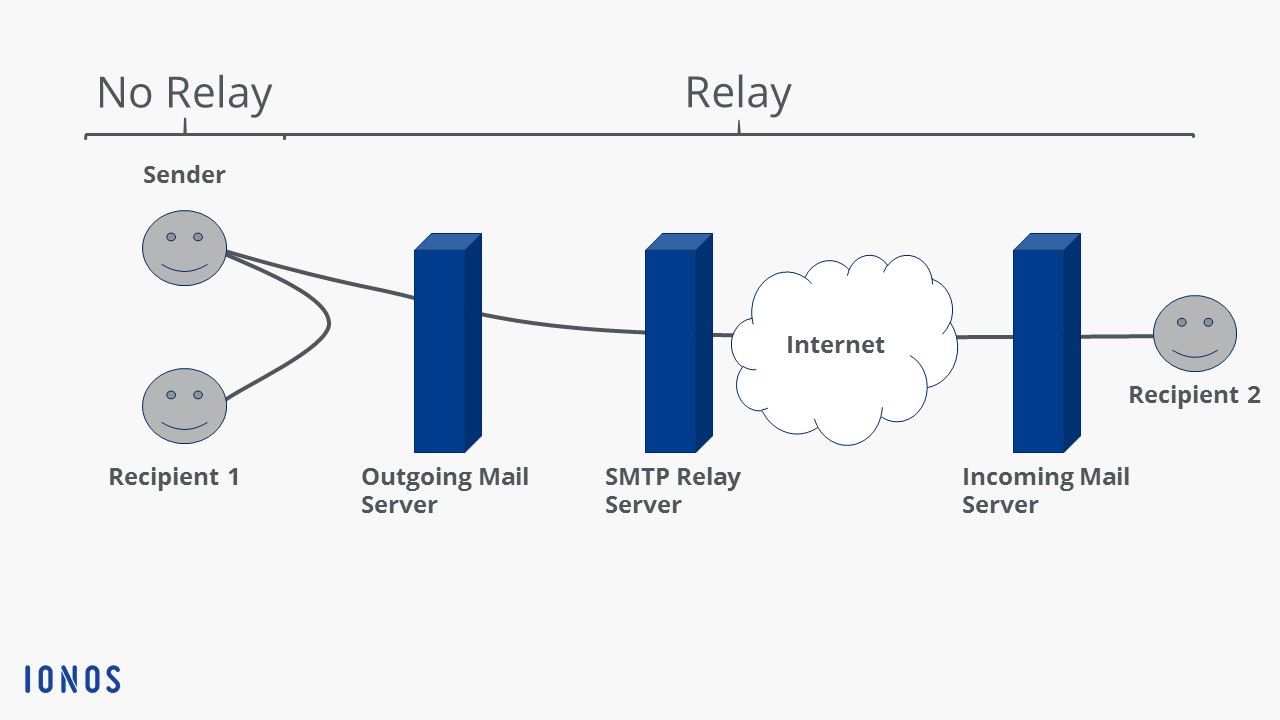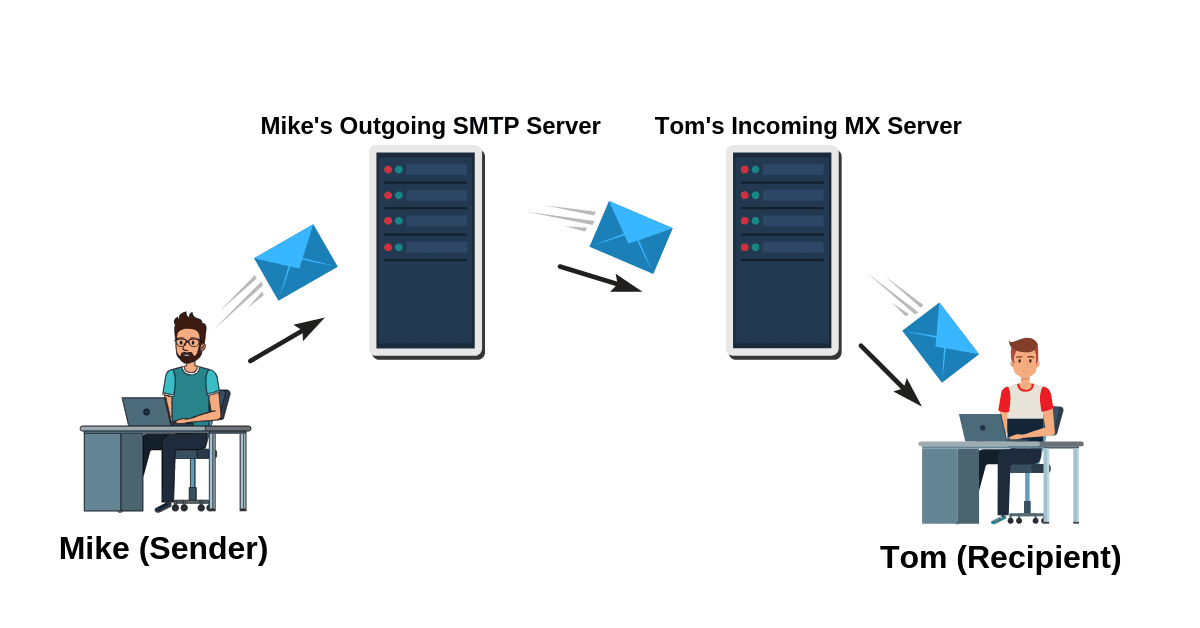SMTP email relay is a service that helps send emails through a trusted server. It ensures emails reach their destination without being flagged as spam.
Email communication is vital for businesses and individuals alike. SMTP (Simple Mail Transfer Protocol) email relay plays a crucial role in this process. It acts as a middleman, passing emails from the sender’s server to the recipient’s server. This service is essential for maintaining email deliverability and security.
Understanding SMTP email relay can help you improve your email practices and ensure your messages are received. In this blog post, we will explore what SMTP email relay is, how it works, and why it is important for effective email communication. Stay tuned to learn more about this key element of email infrastructure.

Credit: www.mailjet.com
Introduction To Smtp Email Relay
SMTP email relay is a process that ensures your emails reach their destination. Understanding this process can improve your email communication. Let’s dive into the basics and importance of SMTP email relay.
Basics Of Smtp
SMTP stands for Simple Mail Transfer Protocol. It is a set of rules for sending emails. SMTP servers help in transferring emails from one server to another. This protocol ensures email delivery. SMTP uses a command and response system. The sender’s server communicates with the receiver’s server. It verifies the recipient and sends the email.
Importance Of Email Relay
Email relay is crucial for many reasons. First, it helps in sending emails to multiple recipients. This is vital for businesses and organizations. Second, it ensures the delivery of emails. Third, it can help in managing large volumes of emails. Email relay prevents your emails from being marked as spam. It also helps in tracking email delivery status.
How Smtp Email Relay Works
Understanding how SMTP email relay works can help you manage your email communication better. SMTP (Simple Mail Transfer Protocol) serves as the backbone for sending emails. It ensures that your emails reach their intended recipients efficiently and securely.
Step-by-step Process
The SMTP email relay process involves several steps. First, the sender’s email client connects to the SMTP server. The email client submits the email details including the sender, recipient, subject, and body.
Next, the SMTP server verifies the sender’s credentials. This step ensures that the sender is authorized to send the email. Once verified, the server processes the email data.
The SMTP server then looks up the recipient’s domain. It uses DNS (Domain Name System) to find the recipient’s mail server. The email is forwarded to the recipient’s SMTP server.
Finally, the recipient’s SMTP server delivers the email to their inbox. If the recipient’s server is unavailable, the email is queued for later delivery.
Key Components
Several key components play a role in the SMTP email relay process. The first component is the SMTP client. This is typically your email application, like Outlook or Gmail.
The next component is the SMTP server. This server sends and receives email messages. It acts as a middleman between the sender and recipient.
Another key component is the DNS. DNS helps the SMTP server find the recipient’s mail server. It converts domain names into IP addresses.
Lastly, the recipient’s mail server stores incoming emails. It ensures that the emails are delivered to the recipient’s inbox.
Benefits Of Using Smtp Email Relay
SMTP Email Relay is an essential tool for businesses. It offers numerous benefits, including improved email deliverability and enhanced security. These advantages help businesses communicate more effectively. Let’s explore these benefits in detail.
Improved Deliverability
Using SMTP Email Relay can significantly enhance your email deliverability. This means more of your emails reach their intended recipients. SMTP servers are designed to handle large volumes of emails efficiently.
Here are some key points:
- Reduces Spam Filtering: Proper configuration reduces the chance of your emails being marked as spam.
- High Sending Limits: SMTP servers can manage higher sending limits than standard email servers.
- Reputation Management: Using a dedicated SMTP server can improve your sender reputation, which is crucial for deliverability.
Enhanced Security
Security is a major concern for email communication. SMTP Email Relay offers enhanced security features that protect your data and communications. It ensures that sensitive information remains confidential and secure.
Key security benefits include:
- Encryption: Ensures that emails are encrypted during transmission, preventing unauthorized access.
- Authentication: Utilizes authentication methods such as SPF, DKIM, and DMARC to verify sender identity.
- Monitoring: SMTP servers often provide monitoring tools to detect and prevent suspicious activities.
By leveraging these security features, businesses can safeguard their communications against potential threats and breaches. This not only protects sensitive information but also builds trust with recipients.

Credit: www.socketlabs.com
Smtp Vs. Traditional Email Sending
Understanding the differences between SMTP email relay and traditional email sending is crucial. SMTP, or Simple Mail Transfer Protocol, is a method used to send emails. Traditional email sending refers to using a regular email service like Gmail or Yahoo. Each method has its unique benefits and drawbacks. In this section, we will compare the two methods in terms of reliability, speed, and efficiency.
Reliability Comparison
SMTP email relay is more reliable for bulk emails. It ensures that emails reach the recipient’s inbox. Traditional email sending can face issues with spam filters. This might result in emails not reaching the intended recipients. SMTP uses specific protocols that reduce the risk of emails being marked as spam.
Speed And Efficiency
SMTP email relay offers faster email delivery. It is designed to handle large volumes of emails efficiently. Traditional email sending can be slower, especially for bulk messages. SMTP servers optimize the sending process, making it quicker and more reliable. This makes SMTP a better choice for businesses sending many emails.
Setting Up An Smtp Email Relay
SMTP (Simple Mail Transfer Protocol) email relay is a method used to send emails through an external server. This can improve your email deliverability and reduce the chances of your emails being marked as spam. Setting up an SMTP email relay involves several steps. Each step ensures your emails reach their destination without issues.
Configuration Steps
To set up an SMTP email relay, follow these steps:
- Choose an SMTP Server: Select a reliable SMTP server. This could be your email provider’s server or a third-party service.
- Obtain SMTP Credentials: Get your SMTP server’s credentials. These include the server address, port number, username, and password.
- Configure Your Email Client: Open your email client settings. Enter the SMTP server details. Ensure to use the correct port number. Common ports are 25, 465, and 587.
- Enable Authentication: Most SMTP servers require authentication. Ensure your email client is set to use authentication. Enter your SMTP username and password.
- Test Your Configuration: Send a test email. Verify that it is sent without errors.
Common Pitfalls
While setting up an SMTP email relay, you may encounter some issues:
- Incorrect Credentials: Ensure your SMTP credentials are correct. Double-check the server address, port number, username, and password.
- Firewall Issues: Firewalls can block SMTP ports. Ensure your firewall is configured to allow SMTP traffic.
- ISP Restrictions: Some ISPs block certain SMTP ports. If you face issues, try using a different port. Port 587 is commonly used for secure email transmission.
- Authentication Problems: Ensure you have enabled SMTP authentication in your email client. Without proper authentication, the server may reject your emails.
- SPF and DKIM Records: These records help verify your email’s authenticity. Ensure your domain has the correct SPF and DKIM records set up.
By following these steps and avoiding common pitfalls, you can ensure your SMTP email relay is set up correctly. This will help your emails reach their intended recipients more effectively.
Best Practices For Smtp Email Relay
To ensure reliable and secure email delivery, following best practices for SMTP email relay is essential. These practices help prevent issues such as spam, unauthorized access, and delivery failures. Here are some key areas to focus on:
Authentication Methods
Using proper authentication methods ensures that only authorized users can send emails through your server. The most common methods are:
- SMTP AUTH: Requires users to authenticate with a username and password before sending emails.
- IP Whitelisting: Allows only specific IP addresses to access the SMTP server.
- DKIM (DomainKeys Identified Mail): Adds a digital signature to your emails, proving they are from a verified source.
- SPF (Sender Policy Framework): Specifies which servers are allowed to send emails on behalf of your domain.
Using a combination of these methods enhances security and reduces the risk of unauthorized access.
Monitoring And Reporting
Regular monitoring and reporting help you keep track of your email relay activities. This ensures any issues are detected early and addressed promptly. Consider the following tools and practices:
- Log Analysis: Regularly review SMTP logs to identify unusual activity.
- Delivery Reports: Monitor delivery status and bounce rates to ensure emails reach their intended recipients.
- Alert Systems: Set up alerts for suspicious activity, such as multiple failed login attempts.
- Performance Metrics: Track key metrics like email throughput, latency, and delivery success rates.
Implementing these practices helps maintain the integrity and reliability of your SMTP email relay system. It also improves overall performance and security.
Common Challenges And Solutions
SMTP email relay is a reliable way to send emails through a third-party server. Yet, users often face common challenges. Understanding these challenges and their solutions can help maintain smooth email delivery.
Troubleshooting Issues
SMTP issues can arise from incorrect server settings. Always double-check server addresses and port numbers. Incorrect credentials can also cause problems. Ensure your username and password are accurate. Network problems may also block SMTP connections. Check your firewall and antivirus settings.
Avoiding Spam Filters
Spam filters can block your emails. Use a recognizable sender name. Avoid spammy words in your subject line. Make sure your email content is clean and well-formatted. Add a clear unsubscribe option. This builds trust with recipients and reduces spam complaints. Regularly update your email list. Remove inactive and invalid addresses. This improves your sender reputation and reduces bounce rates.

Credit: www.ionos.ca
Choosing The Right Smtp Relay Service
Choosing the right SMTP relay service is crucial for your email delivery. A good service ensures that your emails reach the inbox. It also helps avoid spam filters. Below are some key factors to consider and top providers to help you make an informed decision.
Top Providers
- SendGrid: Known for its robust API and analytics.
- Mailgun: Offers flexible pricing and reliable performance.
- Amazon SES: Affordable and integrates well with AWS services.
- SMTP2GO: High deliverability rates and excellent support.
- Mailjet: User-friendly interface and good customer service.
Factors To Consider
| Factor | Details |
|---|---|
| Deliverability | Ensure the service has a high deliverability rate. |
| Scalability | Check if the service can scale with your needs. |
| Pricing | Look for a service that fits your budget. |
| Support | Good customer support can solve issues quickly. |
| Features | Advanced features like analytics and API access are important. |
Choosing the right SMTP relay service involves evaluating your specific needs. Whether it’s high deliverability, scalability, or cost, make sure to choose a service that aligns with your goals.
Case Studies And Success Stories
SMTP Email Relay has become a crucial tool for many businesses. It helps them send large volumes of emails efficiently. This section highlights real-life case studies and success stories. These examples show how businesses use SMTP Email Relay to achieve significant results.
Business Applications
Many businesses rely on SMTP Email Relay for various applications. E-commerce companies use it to send order confirmations and promotional emails. Educational institutions use it to send newsletters and important updates to students. Healthcare providers use it to remind patients about appointments and share health tips. Non-profits use it to communicate with donors and volunteers effectively.
Results Achieved
Businesses have seen impressive results with SMTP Email Relay. One e-commerce company increased their email delivery rate by 30%. This led to higher customer engagement and sales. An educational institution improved communication with students. They reported a 40% increase in open rates for their emails. A healthcare provider saw a reduction in missed appointments. They achieved this by sending timely reminders via email. A non-profit organization boosted donations by 25%. They used SMTP Email Relay to send personalized thank-you emails.
Future Trends In Smtp Email Relay
The future of SMTP email relay is exciting. With constant technological progress, it is essential to stay updated. This section explores upcoming trends and predictions in SMTP email relay.
Technological Advancements
New encryption methods are making email relay more secure. These methods protect sensitive information during transmission. Enhanced spam filters are also emerging. They identify and block unwanted emails more effectively.
Artificial intelligence (AI) and machine learning (ML) are being integrated. They help in analyzing email patterns and improving delivery rates. AI can predict potential issues. This ensures a smoother email sending process.
Predictions
SMTP email relay will continue to evolve. Experts predict an increase in real-time analytics. This allows businesses to monitor email performance instantly. Real-time data can improve strategies and boost engagement.
Another prediction is the rise of personalized email content. With advanced algorithms, emails can be tailored to individual preferences. This personalization can lead to higher open rates and better customer relationships.
Frequently Asked Questions
What Is Smtp Email Relay?
SMTP email relay is a process where emails are transferred between servers. It ensures your email reaches the recipient’s server.
How Does Smtp Relay Work?
SMTP relay works by forwarding your email via multiple servers. Each server passes the email closer to its destination.
Why Use Smtp Email Relay?
Using SMTP relay improves email delivery. It reduces the chance of emails being marked as spam.
Is Smtp Relay Secure?
Yes, SMTP relay can be secure. Using authentication and encryption ensures your emails are safely transmitted.
Conclusion
SMTP email relay is essential for smooth email delivery. It helps send emails reliably. This system ensures messages reach the recipient’s inbox. Businesses benefit from efficient communication. Understanding SMTP relay improves email strategies. It also enhances overall user experience. Secure and fast email relay is vital.
It supports both personal and professional needs. Keep exploring and learning. Your emails will always get through.
